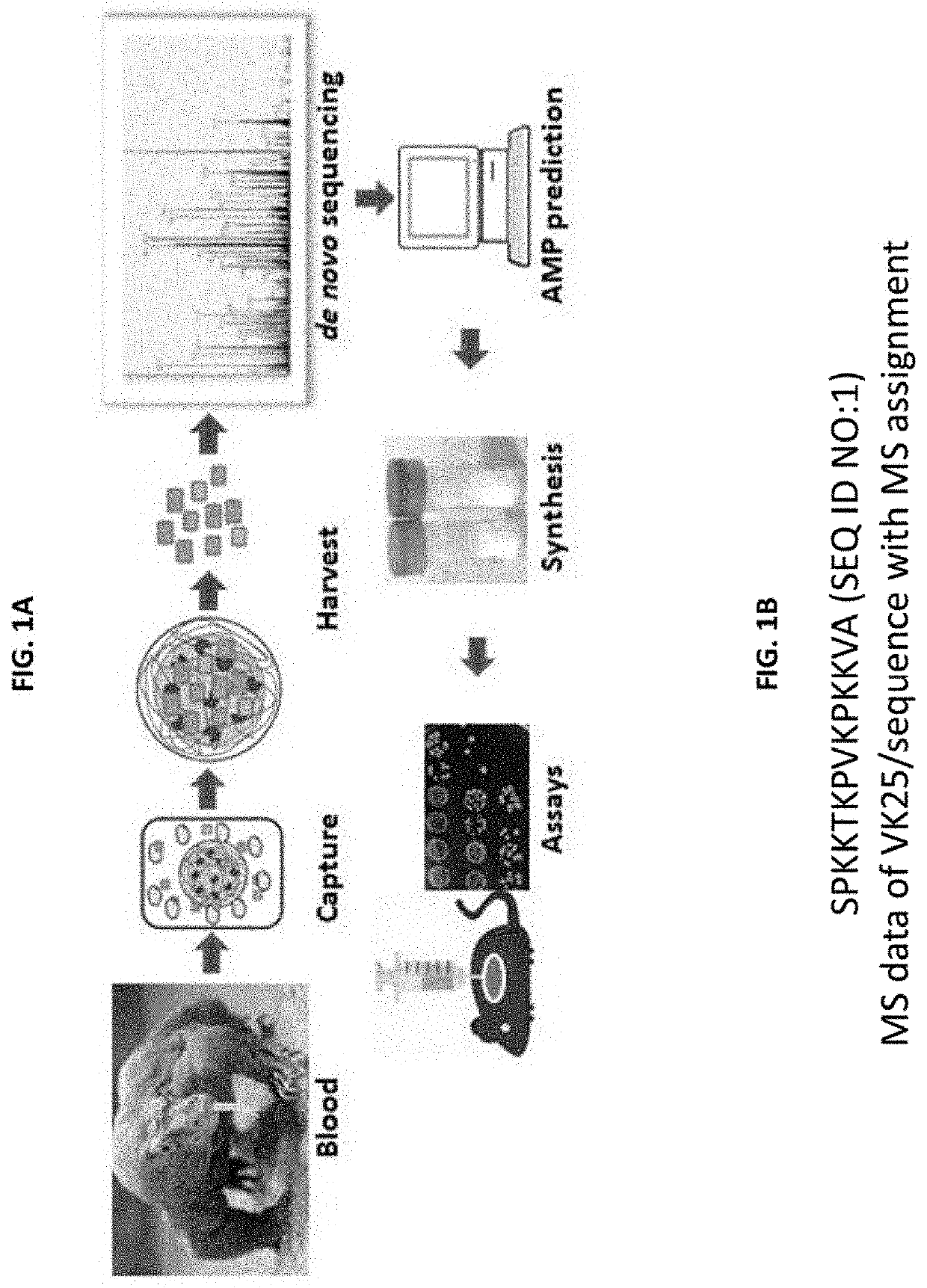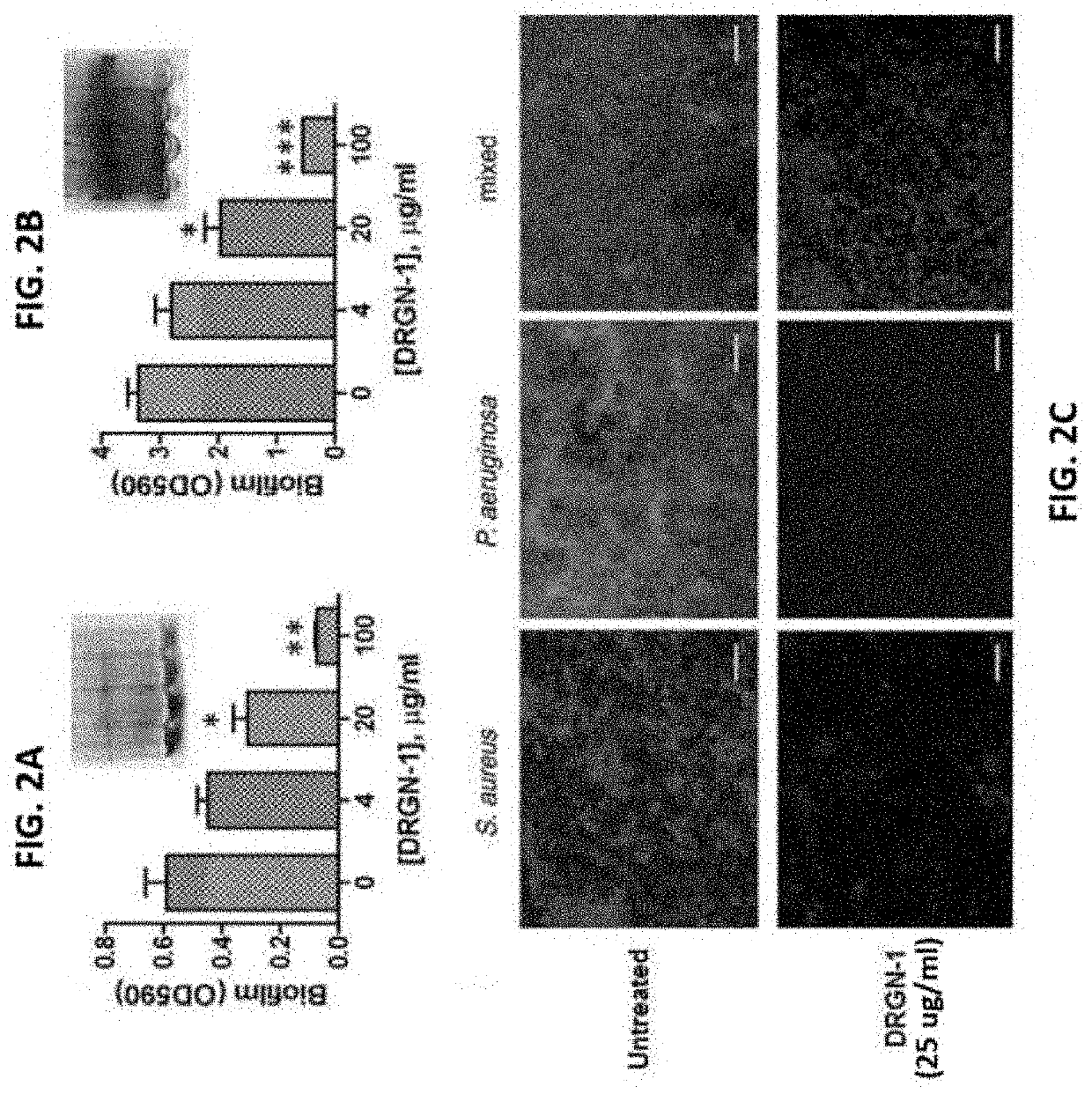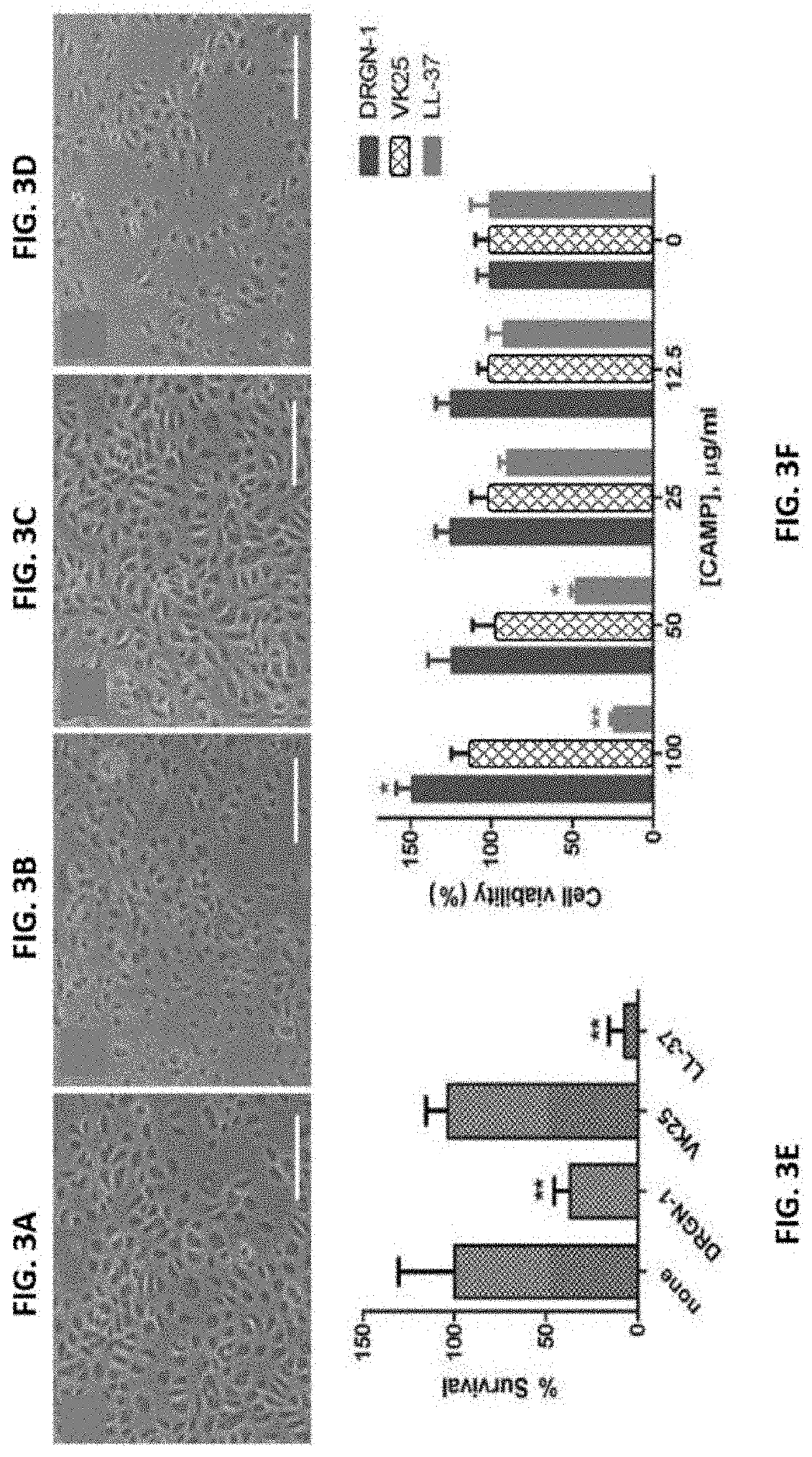Antimicrobial peptides with wound healing activity
a technology of antimicrobial peptides and wound healing, which is applied in the direction of antibacterial agents, peptide sources, prostheses, etc., can solve the problems of insufficient efficacy in animal models, difficult for bacteria to develop resistance, and raise potential problems for clinical use, so as to improve the effectiveness of treatment, reduce biofilm levels, and improve the effect of treatmen
- Summary
- Abstract
- Description
- Claims
- Application Information
AI Technical Summary
Benefits of technology
Problems solved by technology
Method used
Image
Examples
example 1
Materials and Methods
[0082]Bacterial strains and peptides: Pseudomonas aeruginosa ATCC 9027, P. aeruginosa PAO1 ATCC 15692, Escherichia coli O157:H7 ATCC 51659, and Staphylococcus aureus ATCC 25923 were obtained from the American Type Culture Collection (ATCC, Manassas, Va.). Francisella novicida U112 NR-13 was obtained from BEI Resources (Manassas, Va.). P. aeruginosa PAO1 cells that constitutively expressed GFP (PAO1 pTDK-GFP) and S. aureus SH1000 that expressed RFP (SH1000 pAH9-RFP) were provided by Dr. Douglas Weibel (Flickinger and Copeland, J Am Chem Soc 133:5966-5975, 2011) and Dr. Blaise Boles (Schwartz et al., PLoS Pathog 8, 2012, doi:10.1371 / journal.ppat.1002744), respectively. DRGN-1 and VK25 were synthesized using conventional solid-phase methodology by ChinaPeptides (Suzhou, China). The crude compounds were purified to chromatographic homogeneity in the range of >95% by using reversed-phase high-performance liquid chromatography with a mass spectrometer by the company. ...
example 2
Antimicrobial and Anti-Biofilm Activity of DRGN-1
[0094]To investigate whether DRGN-1 and VK25 could exert antimicrobial effects, the activity of CAMPs was tested against the Gram-negative P. aeruginosa, F. novicida, and E. coli, and the Gram-positive S. aureus. The results showed that DRGN-1 was indeed antimicrobial in an EC50 assay against the Gram-negative P. aeruginosa and E. coli and the Gram-positive S. aureus, with a range of 0.77-7.1 μg / ml (0.50-4.62 μM), while VK25 was ineffective within 100 μg / ml (TABLE 2). This implied that switching the proline-serine sequence to serine-proline may have contributed to the peptide's antimicrobial activity. It is of note that the peptides displayed activities comparable to that of the “classic” AMP human cathelicidin LL-37 (EC50=0.24-2.7 μg / ml; 0.05-0.60 μM). Next, the ability of DRGN-1 to prevent the formation of biofilm after 18 hours was examined by crystal violet staining and confocal microscopy (FIG. 1). When cultured in a polystyrene ...
example 3
Activity on P. aeruginosa-infected HEKa keratinocytes
[0095]To gain insight into the activity of DRGN-1 against internalized P. aeruginosa, HEKa keratinocytes were infected with P. aeruginosa ATCC 9027 and subsequently treated with DRGN-1 and VK25. As highlighted in FIG. 3, the killing of infected keratinocytes became more pronounced 2 hours after their exposure to the bacteria, presumably due to P. aeruginosa-induced apoptotic cell death, which was strongly prevented by treatment with DRGN-1 (FIGS. 3A-3D). DRGN-1, but not VK25, significantly reduced the number of internalized bacteria, with the peptide causing 36% killing of the bacteria at the concentration used (30 μg / ml) and after 2 hours (FIG. 3E). The effect of DRGN-1 and VK25 on the survival of metabolically active HEKa cells was further studied using an MTT-based assay. As shown in FIG. 3F, both DRGN-1 and VK25 were devoid of toxic effects at a concentration range of 12.5˜100 μg / ml. However, the control CAMP LL-37 caused a si...
PUM
| Property | Measurement | Unit |
|---|---|---|
| emission wavelength | aaaaa | aaaaa |
| excitation wavelength | aaaaa | aaaaa |
| concentrations | aaaaa | aaaaa |
Abstract
Description
Claims
Application Information
 Login to View More
Login to View More - R&D
- Intellectual Property
- Life Sciences
- Materials
- Tech Scout
- Unparalleled Data Quality
- Higher Quality Content
- 60% Fewer Hallucinations
Browse by: Latest US Patents, China's latest patents, Technical Efficacy Thesaurus, Application Domain, Technology Topic, Popular Technical Reports.
© 2025 PatSnap. All rights reserved.Legal|Privacy policy|Modern Slavery Act Transparency Statement|Sitemap|About US| Contact US: help@patsnap.com



